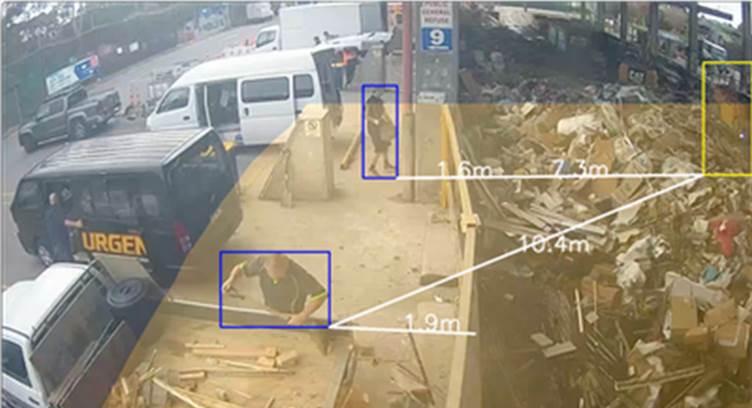As a first step in developing its Multi Access Edge Compute capabilities, Spark has taken a Qrious-developed AI-powered computer vision pilot for EnviroNZ, the parent company of EnviroWaste, and enhanced it with 5G connectivity and local edge computing (AWS Snowball Edge).
The pilot of the computer vision system helps solve a key business issue for EnviroNZ at its resource recovery centre identifying health and safety risks. As a result, Qrious worked with EnviroNZ to develop a hazard detection system using AI to help them detect if people are too close to excavators working in the waste disposal area at a busy resource recovery centre. Using computer vision and IoT (Internet of Things) video cameras, it identifies and tracks people and excavators within a specified detection zone and calculates distances between them.
The Qrious system can trigger alerts when a person is identified as being too close to an excavator.
To help explore the potential of Multi Access Edge Compute within this pilot, the EnviroWaste video feed is transmitted over 5G connectivity to the cloud-based application hosted at the edge.
The added benefit of adding edge compute to this mix allows data to transfer more quickly back to the cloud-based application to the 5G connected video camera, and therefore for hazards to be flagged more quickly.
The hazard detection system has been running as a pilot for the last six months. Aughton says that results have been so successful that the business is now exploring extending the trial to a second site,
While other use cases are still emerging, it’s clear that Multi Access Edge Compute minimises latency and network hops required to connect from a business cloud-edge application to an end user’s or IoT device.
Chris Aughton, CEO of EnviroNZ
Safety is a constant focus for us. We have strong controls to protect people on our sites but we’re always working on how we can take it to the next level. In the past year we’ve seen instances at one of our resource recovery centres where members of the public have tried to retrieve something from a clearly signed and barrier protected no go area where our excavators work. Thankfully no one was injured. Our on site team constantly monitor for this type of situation but it got us thinking, could we use technology to make it easier for them? So we challenged Qrious to develop a cutting edge AI solution that could make our site safer by enabling us to anticipate and react immediately if someone bypasses our safety controls.
Mark Beder, Technology Director for Spark
We are looking for ways to bring the potential of 5G to life – demonstrating how faster throughput, lower latency and high levels of reliability can create tangible business outcomes. We are looking forward to working with the business community in the coming years to identify and test further use cases.




















